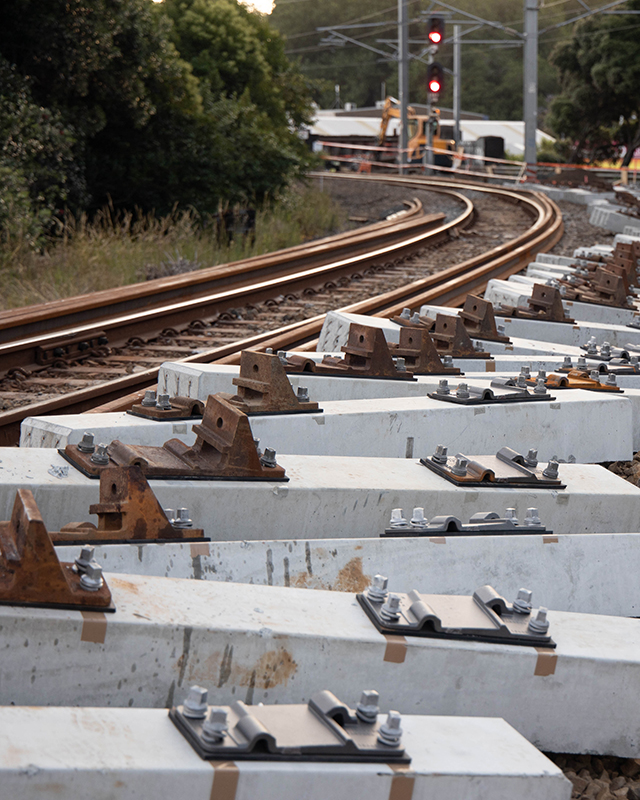Track
We look after New Zealand’s rail network, including maintaining 3700 kilometres of track and 6 million sleepers.
The rail track is the entire structure that trains run on, including:
- Rails – these are the lengths of steel that are welded together.
- Sleepers – these are supports for the rails.
- Ballast – this is the coarse stones that support the sleepers.
- Formation – this is the foundation for the track structure.
- Drains – these keep the formation dry and strong.
How we maintain tracks
Our regular maintenance activities include:
- Minor maintenance and repairs – keeping all track fastenings secure and drainage systems clear.
- Destressing rail – stretching the rail to protect against track buckling during hot weather.
- Rail repairs and welding – keeping the joined lengths of rail secure and smooth.
- Fixing track mud spots – replacing soft formation and degraded ballast.
- Drainage maintenance – clearing drains and culverts.
- Track inspections – identifying any faults for repair.
We use specialist machines including:
- Rail grinder – reprofiles the rail head to minimise wear, remove minor defects and reduce stress on the rail from trains travelling over it.
- Tamper – adjusts the track alignment by lifting the track and compacting the ballast under the sleepers.
- Stabiliser - shakes and consolidates the track formation, as part of ensuring it is stable.
- Ballast cleaner – a large machine that removes the ballast, passes it through a sieve and rejects non-compliant ballast. New ballast replaces the rejected ballast with the tamper machine installing track to the correct geometry.
- Track panel lifters and trollies – equipment to lift and transport pre-assembled track panels up to 75 metres long.
Upgrading Track
When track reaches the end of its life cycle, we replace the rail, sleepers and ballast. Sometimes the drainage system needs to be cleared and the formation replaced. On the Auckland metro network we are carrying out a major project to improve the resilience of underlying track infrastructure.
This video shows how we replace the foundations under rail tracks. The location is Sylvia Park on the Auckland metro Eastern line.
Listen to our Metros Techincal Manager explaining wheel squeal.
Temporary speed restrictions
In certain situations we slow the speed of trains over a section of track - a temporary speed restriction – to ensure they can travel safely. We might do this when the rail gets very hot and risks buckling, while we are awaiting a permanent track repair, or after we’ve laid new track to give it time to ‘bed in’.
